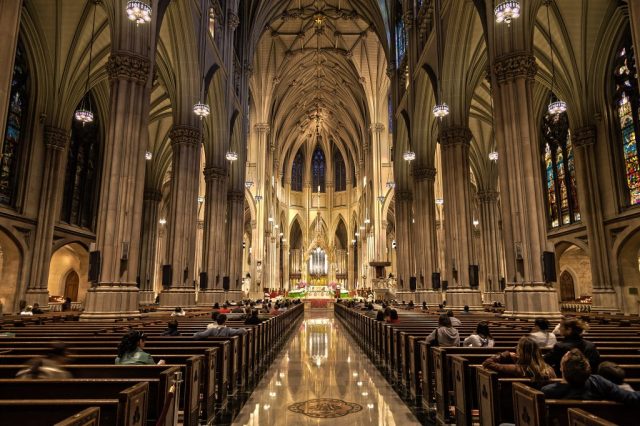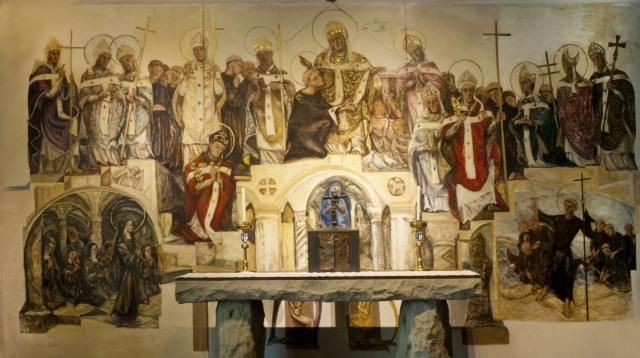I have often spoken about the importance of books in shaping our spiritual experiences, and there can be no doubt about that. I think it is also true that art has great power to form our sensibilities, and influence, on a very deep level, our subsequent behavior and intuition about spiritual reality. Lately I have been thinking about my very own home cathedral, St Patrick’s in Manhattan. I can remember, beginning in high school and continuing into college, of spending quite a lot of time in the magnificent cathedral on Fifth Avenue, its Gothic spires and great bronze doors amidst the skyscrapers a real inspiration.

Every single time I would walk into the great church, the view down the nave would take my breath away and make my heart sing, eyes alternating from the great expansive ceiling to the high altar and all around to the magnificent stained glass windows.

But the great power of the cathedral, which was certainly undeniable, was complemented by the many side altars with their various mosaics, paintings and other devotional art. This of course included images and statues of Christ, the Virgin Mary, St Patrick, and other familiar and expected figures. But when I think back to what also fired my imagination, it was primarily the impressive statues in niches along the walls done by the German-American immigrant sculptor Joseph Sibbel, one of the great ecclesiastical artists of the later nineteenth century. What was different about these statues is that they were not just of devotional saints, but of great theologians and “Doctors of the Church”. They included learned and intellectual giants of the Catholic tradition, such as the twelfth century St Anselm of Canterbury, famous both for his philosophical works and prayers and meditations.

Alongside one another sat the thirteenth century Franciscan theologian St Bonaventure and the the eighteenth century moral theologian St Alphonse Liguori.

And finally, perhaps the one I loved most of all, the twelfth century Cistercian monk and mystical theologian St Bernard of Clairvaux.

There were others, but these made the greatest impressions on me, and when I consider what I have gone on to do and study, all of these thinkers have played a crucial part in my intellectual and devotional life. I have little doubt that my calling to teach about the medieval church and spirituality more generally was partly formed by literally gazing up at these wonderful statues by Sibble.
This leads me to the important point that given how influential and formative imagery can be in a sacred environment, it is so crucial that along with art that is primarily devotional, it is also important to inspire the onlooker by beautiful images that celebrate saints who are also “Doctors of the Church”, men and women who have combined lives of deep spirituality with serious study and intellectual pursuits, uniting heart and mind in the pursuit of holiness. I am thankful for Sibble and those who planned St Patrick’s cathedral for doing this, and for the way the Holy Spirit used these splendid statues to inspire and guide me in my own vocation as a Christian scholar.







